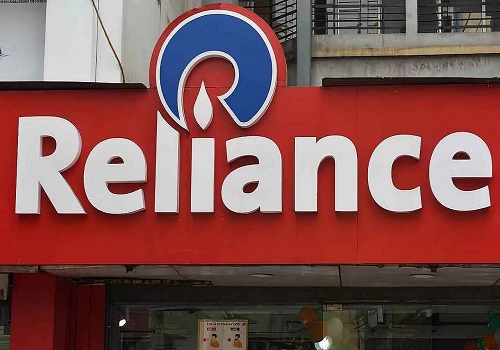Splendour of Mandu: Baz Bahadur and Roopmati

A place worth visiting is Mandu, the hilltop fortress in Malwa, now part of Madhya Pradesh. Many Bollywood movies have been shot at this location, which is considered as one of the most romantic places in India’s tourism calendar. Being somewhat isolated, Mandu retains much of its aura offering a splendid backdrop to the romantic legend of Baaz Bahadur and Roopmati.

Miyan Bayezid Baz Bahadur Khan (1555 to 1562) succeeded his father Shujaat Khan and was the last independent ruler of Malwa. He is known to have fallen in love with Roopmati a singer of Rajput origin and married her according to Muslim and Hindu rites. The story goes that while out on a hunting trip, Baz Bahadur happened to see a shepherdess, singing with her friends. It was love at first sight! Totally smitten by Roopmati’s beauty and melodious voice, he begged her to marry him and accompany him to his capital. After much cajoling, Roopmati agreed to go on condition that Baz Bahadur would build a palace specially for her, from where she would be able to view and offer her prayers to her venerated River Narmada.
Living up to his promise, Baz Bahadur created a splendid palace and a special pavilion from where the river could be viewed in all its glory. Located on an isolated outcrop of a 20 sq km plateau with deep ravines, the Mandu Fort looks formidable - separated in the north by a deep valley, while the southern end is a sheer drop to the plains below. In local parlance, Mandu is referred to as the 'city of joy'.

The original fortress was built by Raja Bhoj in the 10th century - the same ruler after whom the city of Bhopal has been named. History states that when the Mughals invaded and took over Delhi in 1401, the Afghan Governor of Malwa, Dilawar Singh, decided to set up his own kingdom with its capital at Mandu. After him his son Hoshang Shah ruled with considerable style and added other numerous buildings within the fort. Several more changes finally led to Baaz Bahadur taking over power in 1554.
To ensure that Roopmati’s palace, built near the river received sufficient water, Baz Bahadur built a huge water tank - the enormous Rewa Kund. His palace was constructed in 1509 beside the tank and a special water lift was built to ensure that sufficient water reached his palace. The Palace itself is a splendid blend of Rajasthani and Mughal styles of architecture. Roopmati’s Pavilion is located at the very edge of the Fort, overlooking the plains and offering the promised view of the River Narmada below.
There are quite a few structures worth seeing at Mandu that can be divided into three groups - the Royal Enclave, the Village Group which is the only habited part at present and the Rewa Kund group in the southern part of the Fort. The first group includes the Jahaz Mahal, (Ship Palace), the most famous palace at Mandu built by Ghiyas - ud - din, for his harem of more than 10,000 beautiful women. A pleasure palace in times past, this splendid 2-storeyed palace is flanked on either side by two lakes, adding to its ship-like look.

Also in this group is the Hindola Mahal known as the Swing Palace, with a wide sloping ramp that enabled the ruler to be conveyed up on elephant back. The Champa Baoli, has numerous wells and bathrooms located underground, for use in the hot summer months. Among the earliest buildings in the Fort are the Mosque of Dilawar Khan built in 1405 and the Ashrafi Mahal.
In the Village Group is the Jami Masjid with its 80 square metre courtyard, patterned on the famous Omayyed Mosque in Damascus, Syria. It is considered the largest and the finest example of Afghan architecture in India - begun by Hoshang Shah and completed by his successor in 1454. Hoshang's Tomb, located behind the mosque is also said to be India's oldest marble monument, consisting of a central dome surrounded by four smaller domes and lit by natural light filtering in through stone jali screens, Shah Jahan is said to have sent his architects to see this tomb, before designing the Taj Mahal.
Also worth seeing is Darya Khan's Tomb, which earlier had intricately designed mosaic tiles and the Hathi Mahal (Elephant Palace) located nearby, named thus for the massive pillars that support the dome. The Nil Kanth Palace, at the very end of the ravines was created as a pleasant and cool palace built on water under Mughal rule – now converted into a Shiva temple.

With the new Palace now built, Sultan Baz Bahadur who remained deeply in love with Roopmati, began to spend most of his time with her, neglecting the administration of his kingdom. As a result, Mandu became prone to attacks from other rulers, including Mughal Emperor Akbar’s forces, whom he had to meet and managed to defeat a number of times. However, Akbar’s army led by Adham Khan and Pir Muhammad Khan finally managed to defeat Baz Bahadur in the battle of Sarangpur on March 29, 1561.
Having come with the hope of seeing the location and backdrop to the romantic legend of Baz Bahadur and Roopmati, one departs unhappy. This romantic story has a sad and tragic end. When Akbar’s team marched with his army into the Fort, Baz Bahadur fled like a coward and appeared to have no qualms about leaving Roopmati behind. As is expected from proud Rajput women, Rani
Roopmati chose to poison herself rather than fall into the hands of the enemy.





















